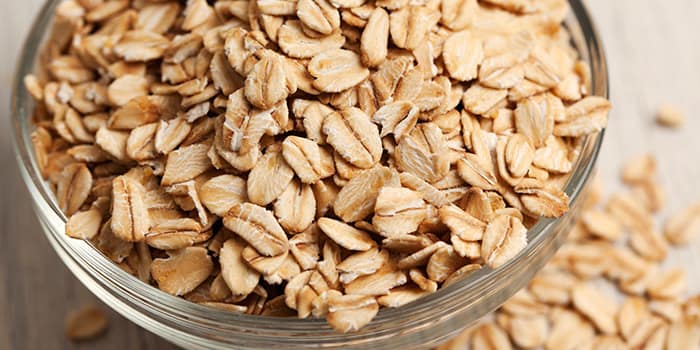6 Benefits of Whole Grains

Most of you were probably there to witness the excitement that was the 2015 Whole Grain Summit live and in person last June. However, for the slackers who missed out on the action-packed event, here are a few important takeaways:
• Purchases of whole grains products increased over the past decade
• Whole grains cost between 24 and 46 percent more than refined grains
• The quinoa square hors d’oeuvres served at happy hour were severely under-toasted.
“There’s a growing movement toward consuming more whole foods,” says Denis Faye, Beachbody’s Director of Nutrition Content. “Man-added nutrients are fine — a multivitamin is a man-made source of nutrients, for example — but you should aim to get the majority of your nutrients from a natural source.”
As for the cost, the long-term benefits outweigh the money saved in the short-term, says Faye. “Quit trying to get a lot out of cheap food,” he avers. “Two-thirds of our country is overweight, and while the ‘refined grains are cheaper’ argument works in extreme circumstances, it makes sense for people to spend a little extra on things like whole grains whenever possible.”
Why is that? Because whole grains are healthier for you than refined ones. Here are six reasons why.
1. They Can Boost Your Fiber Intake
Fibrous grains like oats, bulgur, and whole grain rye can provide you with the soluble and insoluble fiber necessary to help you remain full, control blood sugar levels, and stave off cardiovascular disease. The Institute of Medicine suggests that adult males and females take in 25 grams and 38 grams of fiber per day, respectively. Following their instruction can lead to…
2. More Rewarding Bathroom Trips!
“Fiber helps you poop,” Faye ever so eloquently reminds us. Moreover, a high-fiber diet can keep bowel movements healthy and regular.
3. Whole Grains Boost Phytonutrient Consumption
Whole grains naturally contain phytonutrients that support your efforts to remain free from type 2 diabetes and cardiovascular disease. Then humans stripped the fiber, vitamins, antioxidants, and phytochemicals during the refining process. The result? A diet high in refined grains — white bread, white rice, non-whole wheat pasta, instant oatmeal, and sugary cereals made with enriched flour — instead of organic ones.
4. They Help Control Hunger Cravings
Riding the refined grain train and snacking on foods high on the glycemic index (a ranked list of foods ordered based on how they increase your blood sugar) will initiate a blood sugar spike and can set you on a path toward nonstop cravings. “Refined grains act a lot like sugar,” explains Faye. When you eat them, “insulin comes in to get rid of the extra blood sugar. Once it’s gone, the insulin remains in the system. Then you crave more food.”
5. Whole Grains Add Nutrient Variety to Your Diet
A small percentage of the population has celiac disease — a medical reason to avoid gluten. Another small percentage has developed an intolerance to gluten, which Faye believes may be due to overconsumption. “I think gluten is an issue, but I don’t think gluten is the monster it’s created to be,” he says.
“We’re eating this [protein] in wheat so much that we’re developing a collective intolerance. Our bodies weren’t meant to eat the same things over and over. By doing so we’re missing out on nutrients we may have not even discovered yet. Plus, variety in your diet can leave you less likely to develop food allergies.” If you’re looking to taste test gluten-free grains, give a nod to teff, millet, buckwheat, or amaranth. I’m guessing you’ve already eaten wild rice and quinoa, which are also gluten-free.
6. They’re Easy to Cook With
A 2014 study published in journal Public Health Nutrition found that at-home cooks consumed more fiber and less calories, carbs, and sugar compared to those who dined out. Using hemp and barley, as well as the aforementioned teff, buckwheat, or amaranth are simple, healthy ways to beef up your meals with nutrients. “It’s not like you’re being asked to eat fried grasshopper,” says Faye. “Grains are super easy to work with — you can even throw them in your oatmeal.”
